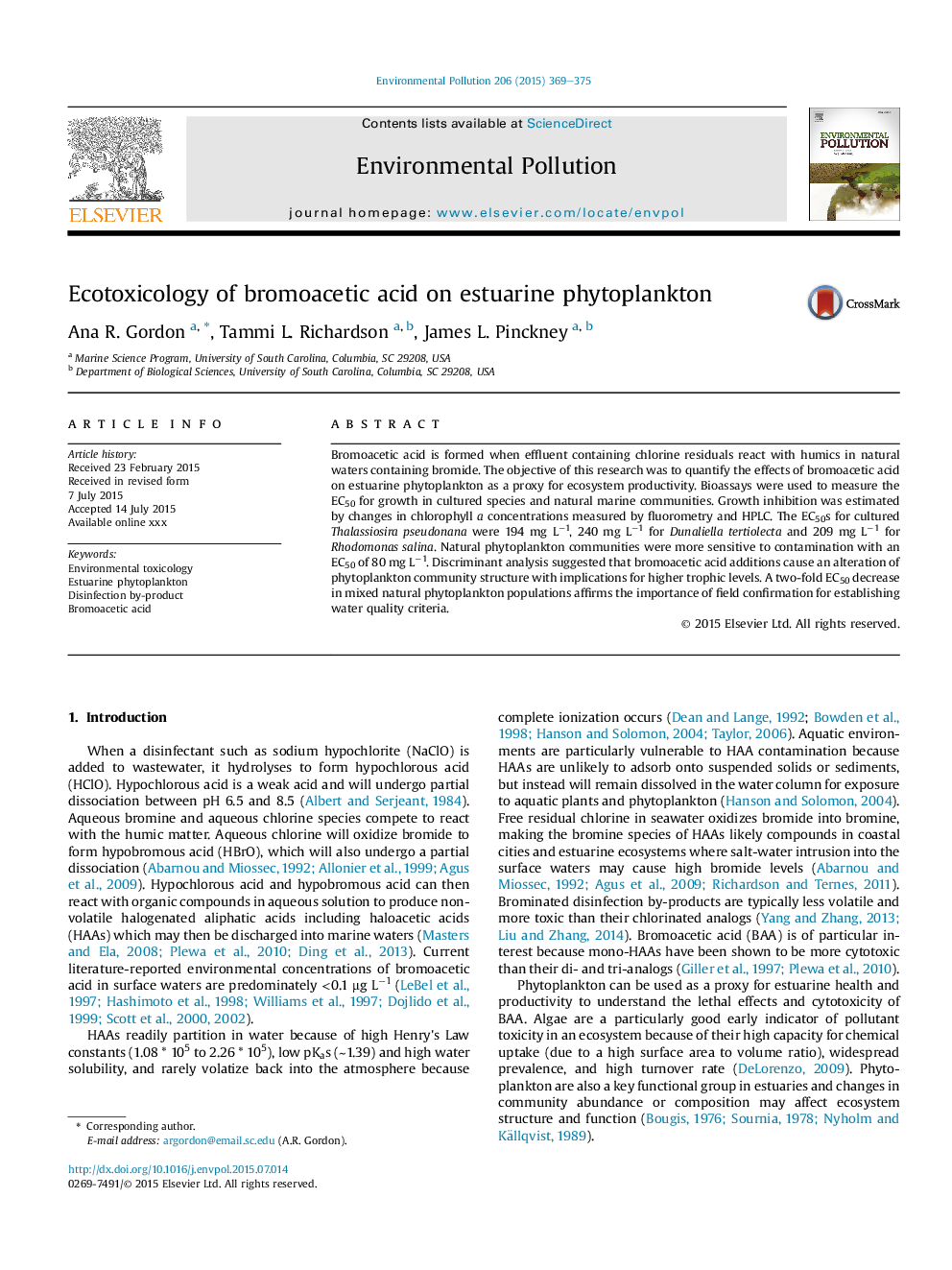| Article ID | Journal | Published Year | Pages | File Type |
|---|---|---|---|---|
| 6316798 | Environmental Pollution | 2015 | 7 Pages |
Abstract
Bromoacetic acid is formed when effluent containing chlorine residuals react with humics in natural waters containing bromide. The objective of this research was to quantify the effects of bromoacetic acid on estuarine phytoplankton as a proxy for ecosystem productivity. Bioassays were used to measure the EC50 for growth in cultured species and natural marine communities. Growth inhibition was estimated by changes in chlorophyll a concentrations measured by fluorometry and HPLC. The EC50s for cultured Thalassiosira pseudonana were 194 mg Lâ1, 240 mg Lâ1 for Dunaliella tertiolecta and 209 mg Lâ1 for Rhodomonas salina. Natural phytoplankton communities were more sensitive to contamination with an EC50 of 80 mg Lâ1. Discriminant analysis suggested that bromoacetic acid additions cause an alteration of phytoplankton community structure with implications for higher trophic levels. A two-fold EC50 decrease in mixed natural phytoplankton populations affirms the importance of field confirmation for establishing water quality criteria.
Related Topics
Life Sciences
Environmental Science
Environmental Chemistry
Authors
Ana R. Gordon, Tammi L. Richardson, James L. Pinckney,
